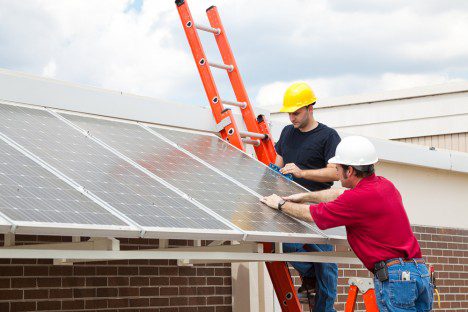
New California ISO policy will spur greater distributed generation
CAISO’s new Deliverability for Distributed Generation methodology will streamline WDG projects for deliverability – a key step in reducing both cost and uncertainty for potential WDG investors.
A new California Independent System Operator (CAISO) policy, which will begin allocating available deliverability capacity to Wholesale Distributed Generation (WDG) projects this summer without requiring these projects to undergo lengthy and expensive individual studies, has been submitted to the Federal Energy Regulatory Commission (FERC) for final approval (Docket No. ER12-2643-001).
CAISO’s new Deliverability for Distributed Generation methodology will streamline WDG projects for deliverability – a key step in reducing both cost and uncertainty for potential WDG investors. After 18 months of advocating for these improvements to the deliverability allocation process, the Clean Coalition is very pleased to see CAISO recognizing and supporting the true value of distributed generation through this innovative policy.
Previously, all new DG projects were subjected to a similar deliverability study process as large-scale energy facilities, which are expensive and time consuming. These studies take at least 1.5 years and require substantial costs – $10,000 for the application fee, plus engineering work and legal fees that can bring the total cost to $50,000. As a result, deliverability studies often delayed or derailed promising WDG projects that would otherwise have taken less than a year to bring online.
This burdensome process dissuaded potential WDG investors, since the inability to obtain deliverability can adversely affect Power Purchase Agreement (PPA) rates. Projects that do not receive deliverability are unable to guarantee delivery of power during peak demand hours. Without this guarantee, projects do not qualify for preferred Time of Delivery rates, which reduces the energy value by up to 30%. This lost revenue is significant enough to ruin the economics of many valuable WDG projects.
Under the new policy, CAISO has already begun publishing annual study results that identify the amount of unassigned deliverability available without upgrade costs throughout its control area. This data will assist in siting projects to make use of existing interconnection facilities and keep costs down for all ratepayers. Part of the available capacity will be annually allocated for WDG projects and immediately assigned. Any unused capacity will be set aside for future allocation throughout the year.
The proposed annual allocation to WDG was initially constrained by very conservative planning scenarios compared to actual WDG project development. Fortunately, the Clean Coalition secured expanded WDG allocations to match actual demand, which will result in the development of more WDG projects through this program.
In response to a FERC ruling on this policy, WDG projects in investor-owned utility service territories will be assigned deliverability on a “first come, first served” basis. Municipal utilities have the authority to assign allocated deliverability as they desire. This allows prioritization based on preferred characteristics, such as new rooftop solar installations and other local energy projects that are sited close to load and avoid the need for remote generation and associated transmission infrastructure.

